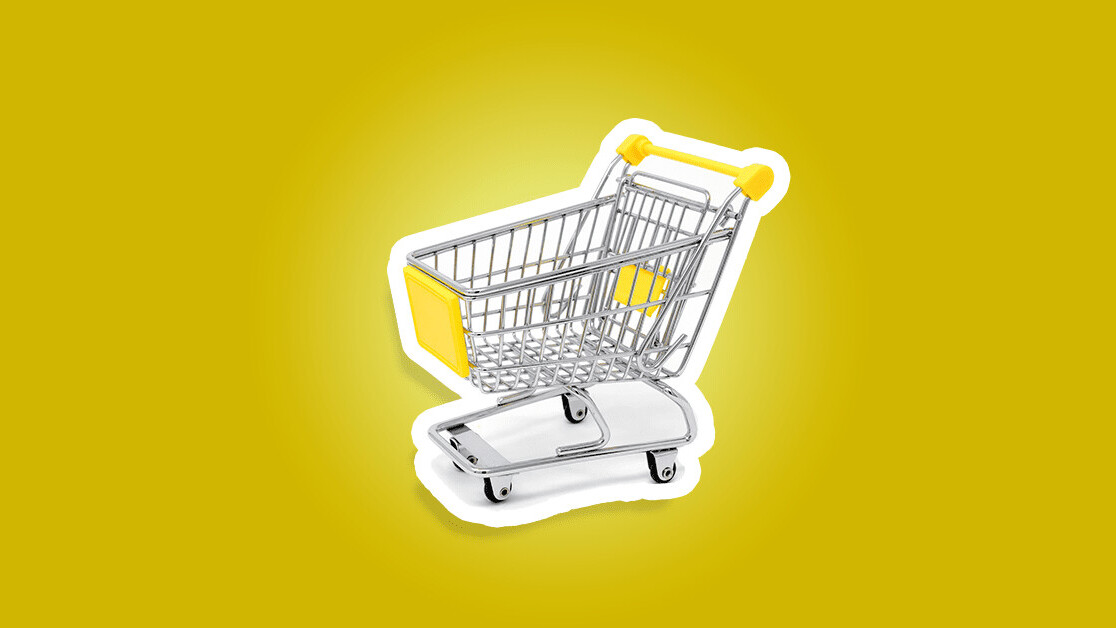
Unfortunately, most of us in the ecommerce scene know the problem of ‘cart abandonment’ all too well. The phenomenon describes the process when an engaged customer adds your product to the cart, but for some reason does not complete the purchase. Imagine an “almost converted” customer who does not contribute to the conversions and ROI. Sad isn’t it?
Although the cart abandonment rate has fallen to 75.6% in the year 2018 when compared to 79.2% in 2017, marketers continue to struggle with the problem of cart abandonment as the total loss has been estimated at around $4.6 trillion. Luckily, I’ve found a few tips that have helped me minimize cart abandonment which you can hopefully benefit from as well.


[Read: Implement OKR, they said. The whole company will love it, they said.]
Another fraudulent activity that leads to cart abandonment is customer journey hacking in which the user’s computer gets inflicted by malware. It tempts the users to click on unauthenticated product ads and links that give the false impression of the ecommerce site. Users who click on these links will get hijacked from the original website to some other website, eventually causing a loss of 5% revenue. It is even worse that online retailers would have no clue about this as the threat is present on the user’s system.
Having said that, let’s explore the strategy on how to build an effective cart recovery program with emails.
1. Segment your customers and plan properly
Your cart recovery program will be effective only if the subscribers find it engaging enough. Therefore, you should plan it properly. Your cart abandonment emails would not work simply by offering discount coupons to each and every customer. Instead, you must segment your customers and try to build relevant emails. Here are some segmentation parameters I’ve found useful:
- Customers with high margin item/s in their cart
- Customers with high value abandoned cart
- First-time cart abandoners
- Repeat abandoners
Slicing and dicing the subscriber list through segmentation will allow you to understand the intention of the cart abandoners and get them to make the purchase.
2. Write a personalized and innovative email copy
In addition to the age, geographic location, and demographics, you should personalize your email copy according to the segmentation parameters discussed above. You should also consider the stage of the customer lifecycle. For instance, when a repeat customer abandons the cart, it is recommended that you ask them if they need any help rather than sending a reminder to make the purchase.
I particularly like the email copy below by Ugmonk. They have set the perfect example of a personalized cart abandonment email that asks the subscriber whether they are facing any difficulty in placing the order:

3. Send a series of two to three emails
I’d advise you to send a series of two to three cart abandonment emails to increase the likelihood of yielding conversions. Send these emails at regular intervals to encourage the customers to complete their purchase.
The first email can be triggered within an hour of abandonment. It works as a subtle reminder that the customer has left something in the cart.
In case the customer does not get converted with this email, you can send another email that creates a sense of urgency.
In case this also does not work, you can send a third and final reminder, to convince them with a discount offer.
ASICS presents a great example of a cart abandonment email series.
While the first email just reminds the customer about the product left in the cart, the second email also highlights the bestsellers that the customer might be interested in.

4. Add visual elements that encourage the subscriber to complete the purchase
Pictures are worth a thousand words. To make sure that you can convey your message more effectively, visual elements go a long way. They not only infuse a sense of trust in the subscribers’ minds, but also entice them to complete the purchase. It’s a great idea to have images of the abandoned items besides the bestselling products.
You can also use illustrative images in the footer just like FOOD52 has done.

5. Have the CTA (call-to-action) prominently placed
CTA is the most important element of cart abandonment email as it will prompt the customer to check out and complete the purchase. Place the CTA button in such a way that it instantly catches the subscriber’s attention. It is better to have the button in a contrasting color to drive a higher click-through rate.
Here’s an example by 23andMe that sends a simple email with a clearly visible CTA.

6. A/B test your cart abandonment emails
You should always A/B test your cart abandonment emails. This is important because a single strategy would not work every time. You should try testing the send time, the subject lines, the email copy, CTA placement, number of cart abandonment emails sent, etc. Based on the performance of these email campaigns, you can keep optimizing them for best results and maximum conversions.
Bonus Tip: You can use AMP or CSS animations to add the cart right within the email, thereby making the checkout process even simpler.
Here’s an example by Nest.
On clicking the Add to cart CTA button, the customers will be able to choose the quantity and color from the email itself. When they will “Proceed to checkout,” they will be redirected to the payment page to complete the purchase.
Gamification of cart abandonment emails
Apart from these tips, there is something else that you should be wary about and that is “gamification.” Many marketers believe that cart abandonment email is the last resort to win the customer back. Therefore, it’s a natural tendency that you would try everything to tempt them into making the purchase. There can be nothing better than a coupon code or discount in such cases.
However, this tactic might attract discount shoppers and dig into your profit margins. Customers may lose trust and your product might get devalued in the time to come. They may get trained to abandon carts deliberately in the expectation of discount coupons.
A simple workaround to this problem is to offer the discount in the second or third cart abandonment email instead of the first one. Moreover, you should not shell out incentives to a repeat customer who abandons the cart. An ideal approach would be trial and error through which you can test the emails and determine what works the best for you without hampering the ROI.
Wrapping up
Companies, especially ecommerce retailers, invest several resources to create a smooth user experience and drive conversions. Cart abandonment is the biggest blasphemy for all these marketers. Cart abandonment emails can work wonders since cart abandoners are already half-convinced prospects which makes it easier to convince them to purchase.
These tips will surely help you to recover the abandoned carts and enhance your conversions while reducing the abandonment.
Like what you’ve read? On Growth Quarters, we strive to go beyond generic ‘fortune cookie advice’ and learn directly from the people who have walked the walk. And this summer, at TNW Conference 2020 in Amsterdam, we’ll take Growth Quarters offline again with a vibrant program dedicated exclusively to sustainable business growth. Listen to keynotes from leaders from the world’s most successful companies and get actionable guidance to help you grow professionally. Get early bird tickets now and learn more about the Growth Quarters track.
Get the TNW newsletter
Get the most important tech news in your inbox each week.





